Alexei Savrasov (Алексей Кондратьевич Саврасов) (1830-1897)
Get a Savrasov Certificate of Authenticity for your painting (COA) for your Savrasov drawing.
For all your Savrasov artworks you need a Certificate of Authenticity (COA) in order to sell, to insure or to donate for a tax deduction.
Getting a Savrasov Certificate of Authenticity (COA) is easy. Just send us photos and dimensions and tell us what you know about the origin or history of your Savrasov painting or drawing.
If you want to sell your Savrasov painting or drawing use our selling services. We offer Savrasov selling help, selling advice, private treaty sales and full brokerage.
We have been authenticating Savrasov and issuing certificates of authenticity since 2002. We are recognized Savrasov experts and Savrasov certified appraisers. We issue COAs and appraisals for all Savrasov artworks.
Our Savrasov paintings and drawings authentications are accepted and respected worldwide.
Each COA is backed by in-depth research and analysis authentication reports.
The Savrasov certificates of authenticity we issue are based on solid, reliable and fully referenced art investigations, authentication research, analytical work and forensic studies.
We are available to examine your Savrasov painting or drawing anywhere in the world.
You will generally receive your certificates of authenticity and authentication report within two weeks. Some complicated cases with difficult to research Savrasov paintings or drawings take longer.
Our clients include Savrasov collectors, investors, tax authorities, insurance adjusters, appraisers, valuers, auctioneers, Federal agencies and many law firms.
We perform Alexei Savrasov art authentication, appraisal, certificates of authenticity (COA), analysis, research, scientific tests, full art authentications. We will help you sell your Alexei Savrasov or we will sell it for you.
Alexei Savrasov was a Russian landscape painter and creator of the lyrical landscape style. Savrasov was born into the family of a merchant. He began to draw early and in 1838 he enrolled as a student of professor Rabus at the Moscow School of painting, sculpturing and architecture (graduated in 1850), and immediately began to specialize in landscape painting.
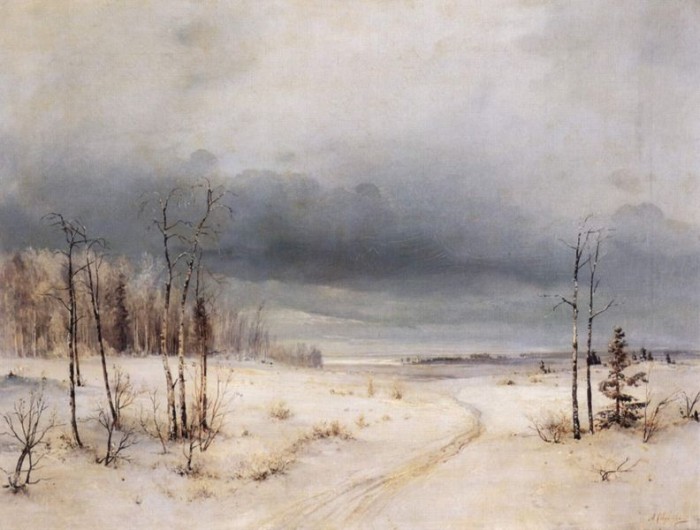
In 1852, he traveled to Ukraine. Then, in 1854 by the invitation of the Grand Duchess Maria Nikolayevna, President of the Imperial Academy of Arts, he moved to the neighborhood of St. Petersburg. In 1857, Savrasov became a teacher at the Moscow School of painting, sculpturing and architecture. His best disciples, Isaac Levitan and Konstantin Korovin, remembered their teacher with admiration and gratitude.
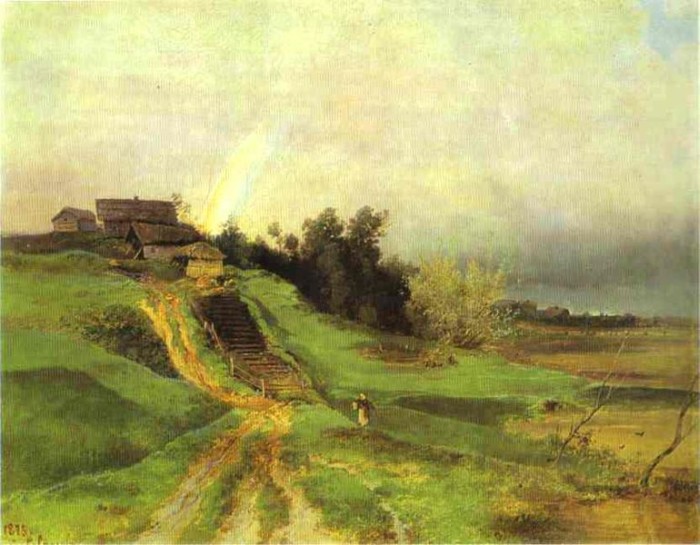
In 1857, he married Sophia Karlovna Hertz, sister of art historian K. Hertz. In their home they entertained artistic people and collectors including Pavel Tretyakov. Savrasov became especially close with Vasily Perov. Perov helped him paint the figures of the boat trackers in Savrasov’s Volga near Yuryevets, Savrasov painted landscapes for Perov’s Bird catcher and Hunters on Bivouac.
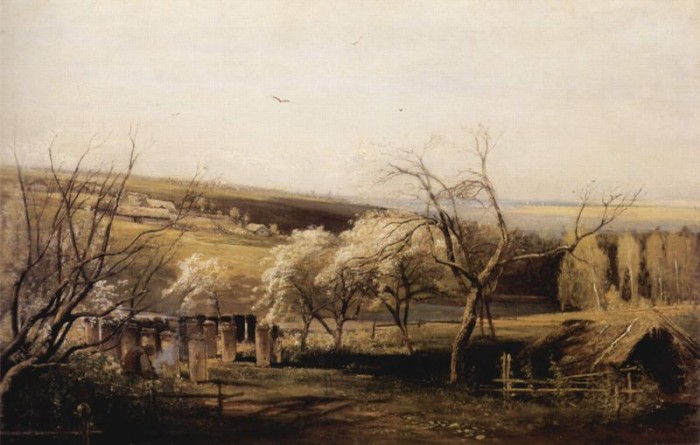
In the 1860s, he traveled to England to see the International Exhibition, and to Switzerland. In one of his letters he wrote that no academies in the world could so advance an artist as the present world exhibition. The painters who influenced him most were British painter John Constable and Swiss painter Alexandre Calame.
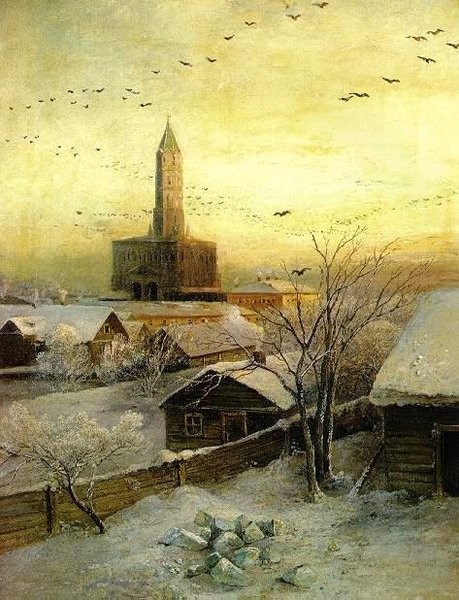
The Rooks Have Come Back (1871) is considered by many critics to be the high point in Savrasov’s artistic career. Using a common, even trivial, episode of birds returning home, and an extremely simple landscape, Savrasov emotionally showed the transition of nature from winter to spring. It was a new type of lyrical landscape painting, called later by critics the mood landscape. The painting brought him fame.
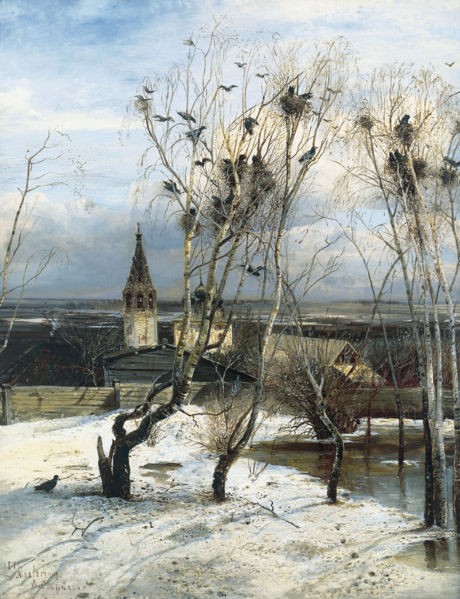
In 1870, he became a member of the Peredvizhniki group, breaking with government-sponsored academic art. In 1871, after the death of his daughter, there was a crisis in his art. The misfortunes in his personal life and, possibly, dissatisfaction with his artistic career were the reasons of his tragedy—he became an alcoholic. All attempts of his relatives and friends to help him were in vain.
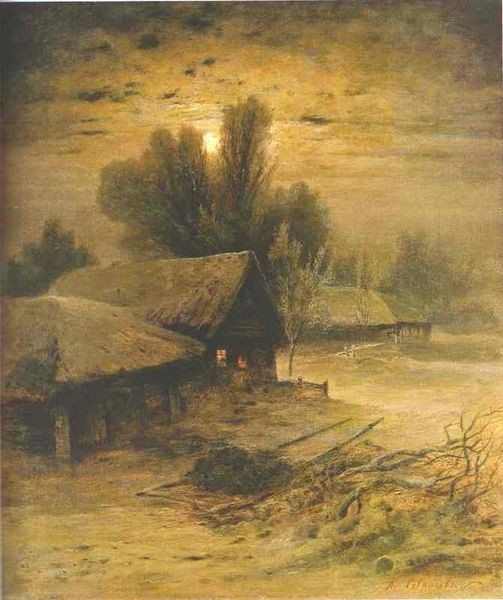
The last years of his life Savrasov led the life of a pauper, wandering from shelter to shelter. Only the doorkeeper of the Moscow School of painting, sculpturing and architecture and Pavel Tretyakov, founder of the Tretyakov Gallery, were present at his funeral in 1897. Still wondering about a 19th century Russian painting in your family collection? Contact us…it could be by Alexei Savrasov.
